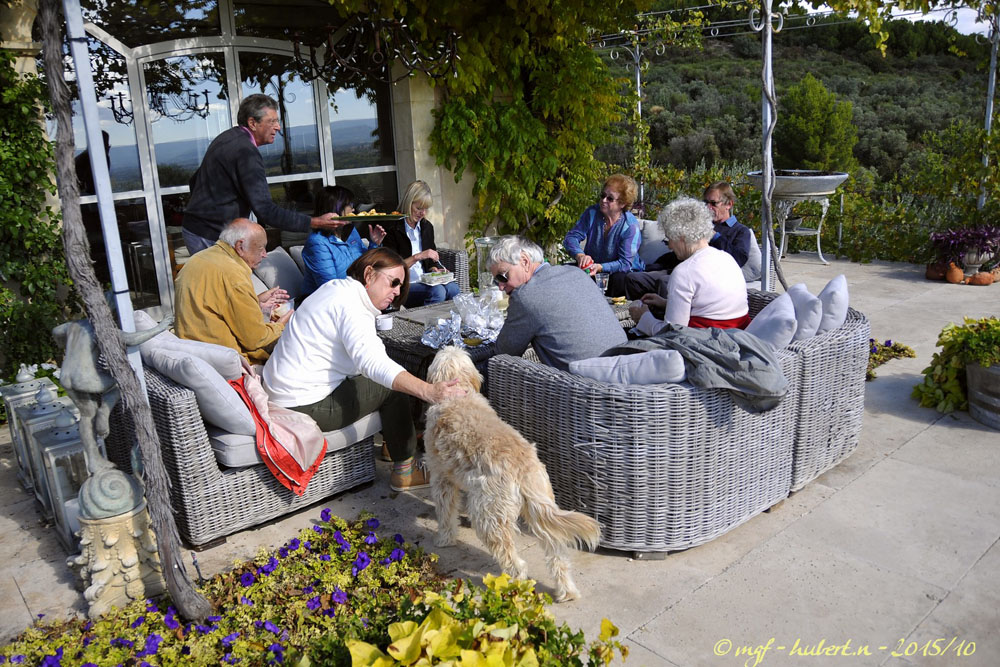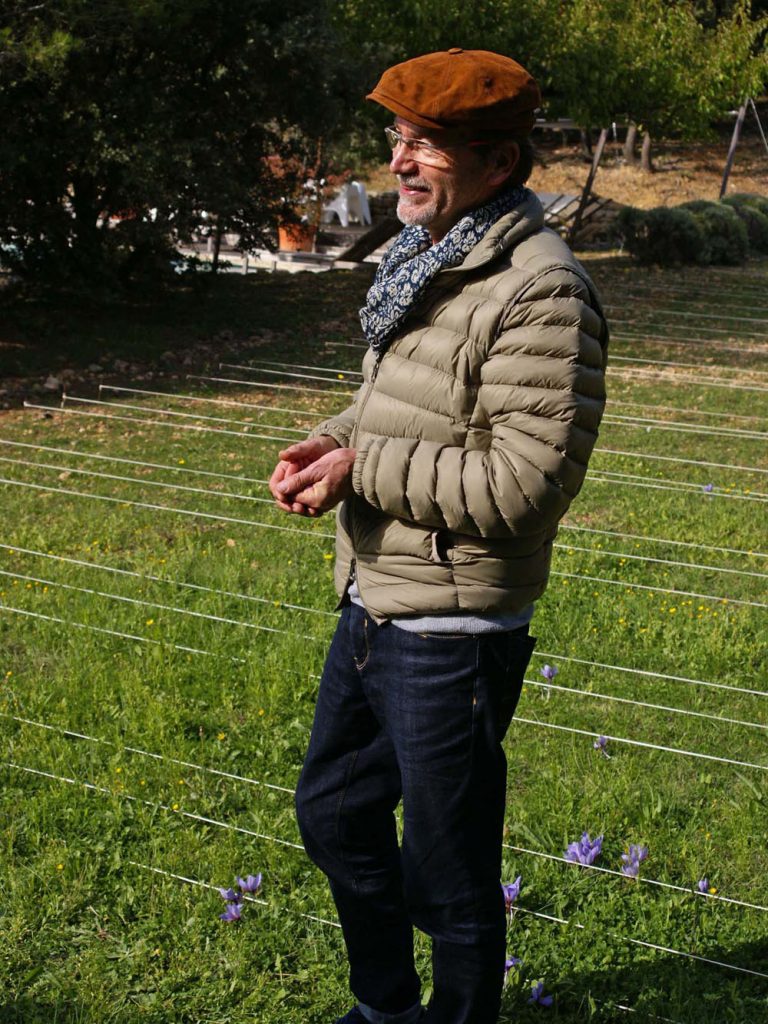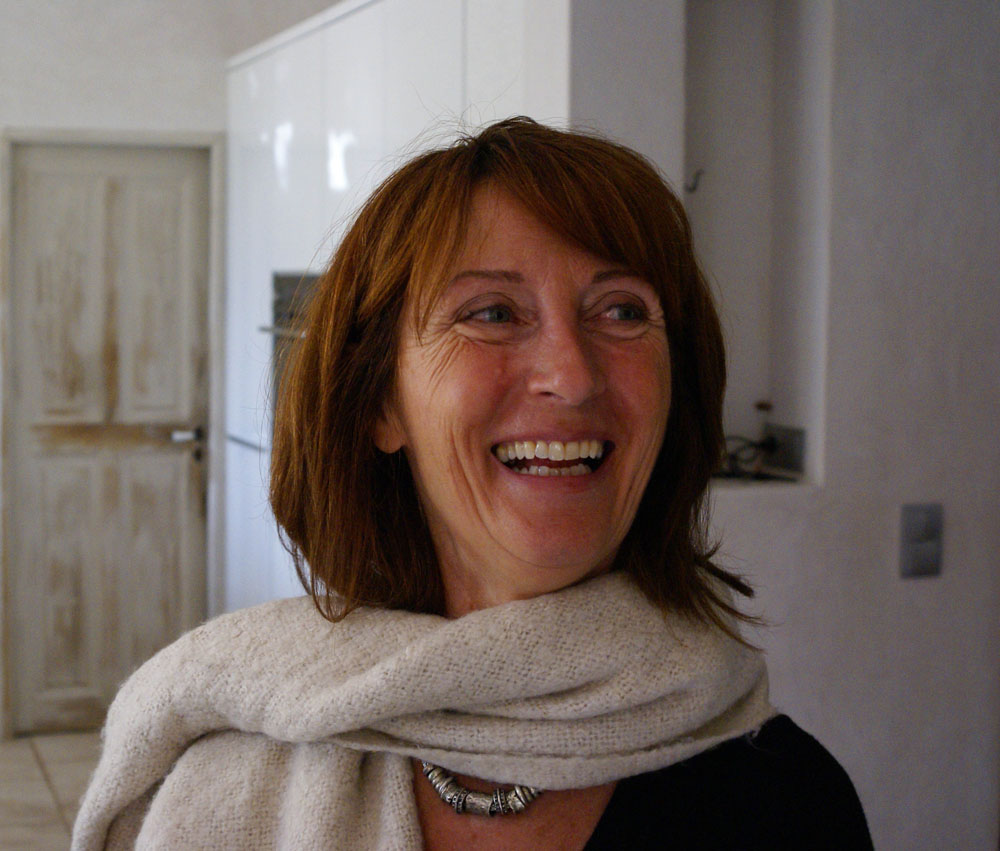October / octobre 2015
Visit to a saffron farm in Le Barroux
Click on an image to enlarge it / Cliquez sur une image pour l’agrandir
On a sunny but cool day a group of around thirty gathered at the house of Jude Baker and Didier Raven for a picnic, prior to a visit to L’Aube Safran to learn about growing saffron.
One might have imagined finding a perch in the garden, but we were warmly welcomed with wine and delicious canapés and shown through to a large terrace with an amazing panoramic view.
At l’Aube Safran we were greeted by Marie and Francois Pillet who had bought the steeply terraced plot, previously used to grow apricots, in 2000. Francois is an architect and Marie an interior designer so they were well suited to designing a new house.
As this was the first house built in the area, the exact location was to a large degree determined by the accessibility of utilities. The house has fine views of the Dentelles de Montmirail. Marie showed us around the garden and the terraces filled with plants in pots then led us to the crocus fields.
Provence used to have the third largest crop of saffron in France but it had not been grown in the Vaucluse for more than fifty years. Cultivation had faded out, affected first by the lack of manpower during the Second World War and thereafter the cost of labour. Today 90% of the world saffron crop is grown in Iran.
The land at L’Aube Safran is argilo-calcaire, with a south-west orientation, and after a vigorous rotivation to remove large stones the soil is well suited to growing Crocus sativus. The crocuses are grown in small parcels to avoid the spread of disease and the little bulbs, which are planted at a depth of 10cm, take 4-5 years to produce flowers.
In 2001, the first consignment of 60,000 bulbs, ordered from Morocco, was delayed for a week for inspection in Marseille, during which time half of the bulbs rotted and had to be destroyed.
In the early years considerable damage was also done by wild boars. The plots are weeded for the first two years but thereafter left natural as the weeds do not impede the development of saffron.
It is the red pistils which are collected and ground to make the saffron powder. 240,000 are needed to make one kilo, which can sell for between €30,000 and €40,000 depending on the quality. For top grades, only the red tips of the stigmata are used. The largest annual crop so far at L’Aube Safran has been one and a half kilos.
We returned to the house to find a selection of tasty dishes all featuring saffron, and a glass of local bio wine.
Frances Horne closed by thanking Francois and Marie for the visit and Christine thanked Frances for organising the day.
Text: Guy Cheeseman
Photographs: Guy Cheeseman and Hubert Nivière
![]()








